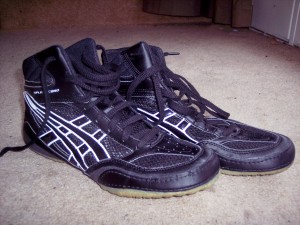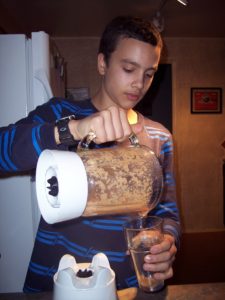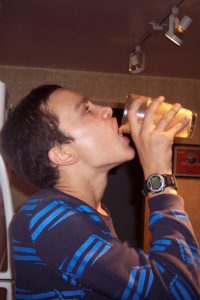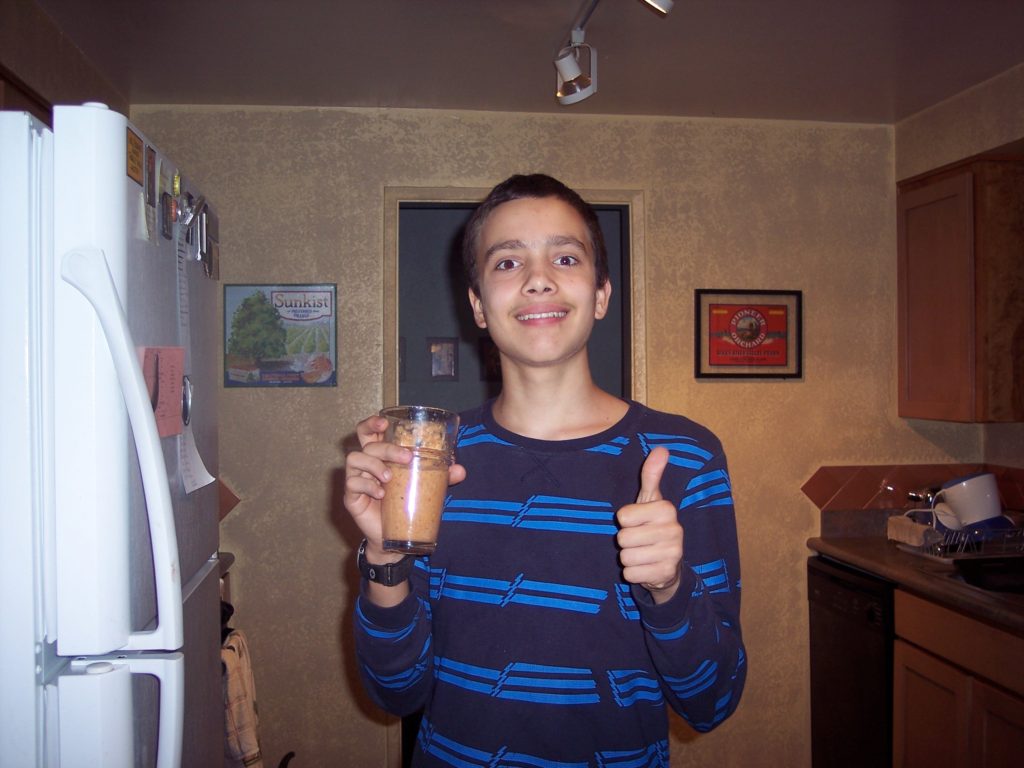
I was going to write a post about all the things in my life that I’m thankful for. You know, sort of like those classroom assignments we’d get while we were growing up, a few years after the handprint turkeys and construction paper pilgrim hats. I had the usual list going – my children, our health, my job, our home – the heavies. My extended family, of course, and my good friends, including my fellow bloggers and wonderful readers, those I know and those I don’t. All of you have enhanced my life in numerous ways, and for that I am very thankful.
My ready-to-post list continued with the people in my life who have been most important in my children’s lives – Neil’s case manager, his teachers, his speech and behavioral therapists, his new wrestling coach, and the Scoutmaster of his troop and all the Scout families who have been so patient and accepting of Neil over the years, even when his behaviors were more difficult. Where would we be without these wonderful people? Where would we be without the doctor who finally, after many anxious weeks of multiple tests and screenings, identified Adam’s medical condition earlier this year? And the surgeon who skillfully removed the offending party? I am so very grateful. Words cannot express my appreciation.
My list extended in a broader, global sense to include my trip to Nepal a few months ago and the beautiful people involved with Knowledge for People and AutismCare Nepal. I am thankful to have had the opportunity to learn from them and work with them, and to have had such an amazing experience that enriched my life. Last, but in no way least, I am thankful for those who selflessly serve our country, who sacrifice time with their loved ones, on Thanksgiving and always. We owe them a huge debt of gratitude.
I had thought about it last night before going to sleep and knew exactly what I wanted to write. I knew what I was thankful for and had the whole post planned. And then something happened this morning. Something happened that made me rethink my Thanksgiving post. In fact, it made me think outside the whole Thanksgiving box. I witnessed a near tragedy, and it shook me.
Since Neil has wrestling practice every day after school and finishes after dark, I drop him off in the morning and pick him up in the evening instead of having him ride his bike. This morning, I pulled up to the main entrance of the school and waited at the stop sign to turn into the driveway. A boy about Neil’s age started walking in the crosswalk in front of us. Across the intersection, a car suddenly began driving through. The driver, a middle-aged man, was headed right for the boy in the crosswalk and didn’t see him. I gasped, frozen. NO! This was not going to happen! Neil and I would not witness a boy get hit by a car! In a fraction of a second, I willed the driver to see the boy, to stop, stop, STOP! At the last possible moment, he slammed on his brakes and missed the boy.
Neil did not seem to grasp the magnitude of what we had seen. In fact, when I asked him, “Did you see that?” he said, “See what?” Then the fact hit me that it could have been him. It could have been my son in the crosswalk. And while that boy was not my son, he’s someone’s son. Someone’s son almost got hit by a car in front of the school today.
But he didn’t. And it made me realize, as I arrived at work this morning and sat in my car crying, that I am most thankful for those moments of grace – when something horrible could have happened, but it didn’t. That all the times over the years when Neil wandered off and was lost that I eventually found him, unharmed. That all the times when he was little and a sound upset him and he bolted into the street or a parking lot, he was unharmed. That the boy who was almost hit by the car this morning wasn’t.
These are all moments of grace – “there for the grace of God go I” – a divine favor, a gift. A break. All the times when I’ve muttered, half to myself, half upward, “Can’t I ever get a break?” – now I know. These are my breaks. I’ve had them all along. They are all around me, still. And my thankfulness is boundless.
Image credit: Luiz Ferreira





















